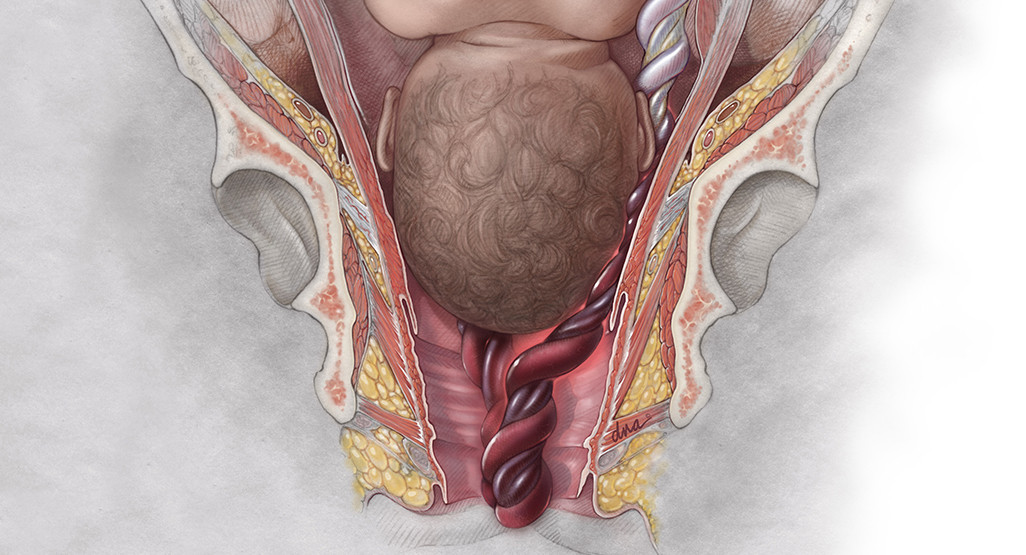Definition
Polyhydramnios is a condition characterized by an excess of amniotic fluid during pregnancy. Amniotic fluid surrounds the baby in the womb, providing protection throughout the pregnancy.
Polyhydramnios occurs in approximately 1 to 2 percent of pregnancies. Most cases are mild and result from the accumulation of amniotic fluid during the second trimester. However, if left untreated, this condition can lead to preterm labor, shortness of breath, and other symptoms.
Causes
The causes of excess amniotic fluid include:
- Twin pregnancy with twin-to-twin transfusion syndrome: this occurs when one fetus absorbs more nutrients than the other
- Congenital abnormalities in the fetus, such as the absence of certain organs due to genetic abnormalities
- Central nervous system and muscular disorders: these can cause swallowing disorders in the fetus
- Fetal heart rhythm abnormalities and blood disorders
- Uncontrolled maternal diabetes
- Chromosomal abnormalities, such as trisomy 21, trisomy 18, and trisomy 13.
- Placental abnormalities
Risk Factor
Risk factors for polyhydramnios include:
- Maternal age over 35 years
- Gestational diabetes
- Anemia during pregnancy
- Large fetal weight
- Twin pregnancy
Symptoms
Polyhydramnios usually develops gradually and may be asymptomatic in its early stages. Possible symptoms include:
- Shortness of breath
- Heartburn
- Constipation
- Swelling in the feet and legs
- Rapid abdominal enlargement in a short period
- Uterine contractions or discomfort
- Difficulty feeling the baby's movements
- A tighter feeling in the abdomen
- Fetal malposition
Diagnosis
Polyhydramnios is diagnosed through patient history, physical examination, and supporting tests.
Anamnesis is carried out by asking about the patient's main complaints, associated symptoms, experiences during pregnancy, treatment history, lifestyle and daily activities, past medical history, previous pregnancies, and family history.
Then the doctor will perform a physical examination. This includes checking blood pressure, respiratory rate, pulse, and body temperature. The doctor will also perform a routine pregnancy examination to measure the length of the uterus, palpate the abdomen to assess fetal position, check for swelling in the hands and legs, and perform a pelvic examination if necessary.
Next, the doctor will carry out supporting examinations such as an ultrasound. An ultrasound is performed to measure the Amniotic Fluid Volume (AFV). An AFV of more than 8 cm indicates the possibility of polyhydramnios. The Amniotic Fluid Index (AFI) may also be assessed; an AFI exceeding 25 cm suggests polyhydramnios. Ultrasound can also detect fetal abnormalities and other complications.
Additional tests may include blood tests to check for abnormalities related to polyhydramnios and amniocentesis to analyze amniotic fluid if necessary.
If diagnosed with polyhydramnios, the doctor will monitor your and the fetus's health using a nonstress test (NST) and a biophysical profile assessment.
Management
Treatment for polyhydramnios depends on the severity of the condition. In mild cases, it often resolves on its own without intervention. However, in cases caused by gestational diabetes, treating the underlying condition is essential.
If preterm labor, shortness of breath, or abdominal pain occurs, the doctor may take the following steps:
Amniotic Fluid Removal
Amniocentesis is performed to remove excess amniotic fluid. This procedure carries risks, including preterm labor, placental abruption, and premature rupture of membranes.
Medication
Oral medications such as steroids may be prescribed to reduce fetal urine production, thereby decreasing amniotic fluid volume. These medications should only be administered and monitored by a doctor.
The doctor will continue to monitor amniotic fluid levels and your pregnancy every 1 to 3 weeks. If polyhydramnios is mild to moderate, you may deliver at 39 to 40 weeks of pregnancy. For severe cases, the doctor will discuss the appropriate timing of delivery to minimize complications for you and the baby.
Complications
If polyhydramnios occurs early in pregnancy and is severe, complications can be more serious. Potential complications include:
- Preterm birth
- Fetal macrosomia (huge fetal size)
- Premature rupture of membranes
- Placental abruption (the placenta detaches from the uterus before delivery)
- Umbilical cord prolapse (the umbilical cord exits the uterus before the baby is born)
- Increased risk of cesarean delivery
- Stillbirth
- Severe bleeding
Prevention
There is no specific way to prevent polyhydramnios, but you can take the following steps during pregnancy to maintain a healthy pregnancy:
Balanced nutrition
Eat a balanced diet that includes vegetables, fruits, and proteins. Reducing excess sugar intake can help prevent gestational diabetes, a risk factor for polyhydramnios.
Folic Acid and iron supplements
Although folic acid can be found in food, taking folic acid and iron supplements is recommended, as anemia rates among pregnant women in Indonesia remain high.
Avoid stress and panic
Stress and panic during pregnancy can cause certain complications, so they should be avoided.
Regular prenatal check-ups
Regular prenatal check-ups are essential to detect and address any abnormalities or issues early. You can visit a midwife or obstetrician for check-ups.
When to See a Doctor?
Seek immediate medical attention if you are pregnant and experience shortness of breath, decreased fetal movement, bleeding, or swelling in your limbs. You can visit the nearest emergency department.
Looking for more information about other diseases? Click here!
- dr. Alvidiani Agustina Damanik
Hamza A., Herr., Solomayer HG., (2013). Polyhidramnios: Causes, Diagnosis, and Therapy. Retrieved 25 October 2022, from https://www.ncbi.nlm.nih.gov/pmc/articles/PMC3964358/
MayoClinic - Polyhydramnios. (2020). Retrieved 25 October 2022, from https://www.mayoclinic.org/diseases-conditions/polyhydramnios/symptoms-causes/syc-20368493
Medscape - Polyhidramnios and Oligohydramnios. (2017). Retrieved 25 October 2022, from https://reference.medscape.com/article/975821-overview
WebMD - What is Polyhidramnios? (2022). Retrieved 25 October 2022, from https://www.webmd.com/baby/what-to-know-about-polyhydramnios










